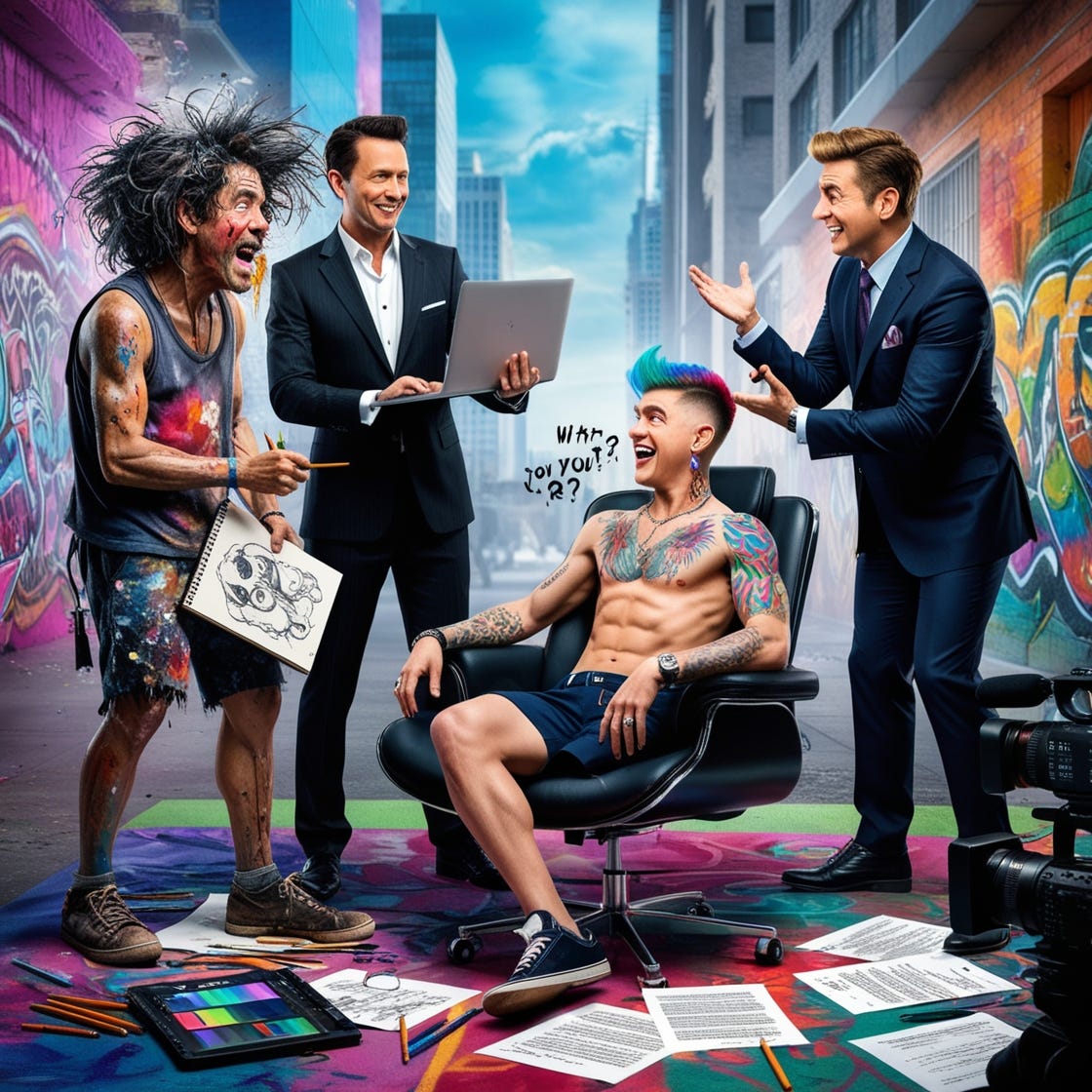The Creator Economy vs. Advertising Silos
The question of who controls the budget may dictate how big this category becomes, and whether brand miss out
I was recently talking to an executive from a major media company about a recent campaign aimed at promoting a new series using a collection of YouTube creators.
I was asking questions about how this person evaluated the campaign - did you try to calculate reach and frequency? Did you look at outcomes? Brand lift, stuff like that?
I was somewhat thrown by her response, which was basically - this was not my department. Promoting a show with the help of a group of creators - that was the creative department’s job. It was their budget, their homework.
Maximize your YouTube advertising with VuePlanner. As a member of the YouTube Measurement Program for Brand Suitability and Contextual Targeting, VuePlanner enables you to buy with confidence, clarity, and precision. Using advanced technology and AI-powered optimization, VuePlanner offers custom-curated contextual collections, exclusive content strategies, and transparent reporting for measurable, impactful results. Take control of your campaign performance—partner with VuePlanner now.
Maybe this is unique to the entertainment category, or this particular campaign. But it struck me as somewhat surprising. The media team has very little to do with a seemingly crucial part of the media buy?
Well, I suppose it depends just on how you look at creators - what they do, and what they are ‘for’ in a cold, bottom line advertising sense. It’s not easy (and probably dangerous to generalize) but I guess my questions are:
Are big creators just like big TV shows, websites or even magazines, where advertisers run ads with them to reach their distinct (and often large) audiences?
Are they something specific, a la ‘social video’ content-makers?
Or are they part of a brand’s creative expression? Is the work they do a ‘creative asset’? Are they closer to celebrity spokespeople in old school TV commercials?
The more questions you ask here, the more you realize how complicated this is. Even as the industry - on both the buy and sell sides - would seem to want to both streamline and elevate the use of creators - is it possible?
I had Deutsch New York executive Ashley Rudder on my Next in Creator Media podcast this week. Her role kinda says it all - she’s DNY’s, Chief Creator Officer, and works in the creative department.
So I asked Rudder, what’s the right way to fund, plan, and execute big creator media partnerships - through the creative department or the media team?
“It's both,” she said. “Creative partnerships are best when they transcend a simple media buy, but because they aren't just collaborators, they're unlocking untapped potential, especially for brands’ owned-and-operated channels.”
“It is the biggest miss for brands [just] using [creators] as media because you know people expect a brand to be an entity. They want to interact with that entity. Just saying, ‘I'm just gonna slap a creator on this’ and that's gonna work. And ‘I can control it through paid media.’ That's not happening. But you can co-create as long as you're not strangling them.”
That’s not to say that at DNY the media team isn’t involved. In fact, I had Rudder’s colleague Karen Benson on my show a few months back, and she noted the need for cross-departmental collaboration, while acknowleding the complexity involved
Creators, “have reach, they have scale, and that is something we’re really good at,” she said. “But you do need to have an expertise, because this is very different muscle, and the output [from creators] is very different [than a typical media buy].”
This battle (if it can be deemed a battle) is going to be an ongoing challenge for ad agencies, brands and media companies to solve. It’s one thing to have everything be bespoke or custom if you’re focused on running occasional ‘special’ campaigns. But creator media is becoming too important to treat as ‘other.’
According to Hub Research, the average household used 13 different sources of entertainment in 2024 (streaming services, social media apps, games)- but for people under 35 that number jumped to 16.
And while among the general public six of those 13 sources were traditional or streaming TV source, for the under 35 crowd “premium TV sources are a minority of their entertainment ecosystem,” wrote the company in a report.
In other words, reaching younger generations is going to require a heavy dosage of creator media if brands want to remain relevant and grow. Siloing seems in the way.
Goldman Sachs has predicted that the influencer category will reach half a trillion dollars in spending in just a few years, with 70% of that spending fueled by brands. But its hard to see spending reach that threshold unless things get easier, and less complicated.
“It’s always going to be messy,” said Laurie Buckle, founder of CookIt Media a few weeks ago on my show.
Perhaps. But digital ad markets like frictionless spending. Maybe creators never quite get there?
“I don't think anyone has it perfect, to be honest,” said Digitas Chief Digital Officer Megan Jones in a recent podcast. “It started out as a very media-first opportunity. Then we started to say, is this actually more PR? Like, where does it sit in the ecosystem? I would say we try less to think about, who owns creator within our clients' marketing org, and more think about the role that those creators.”





